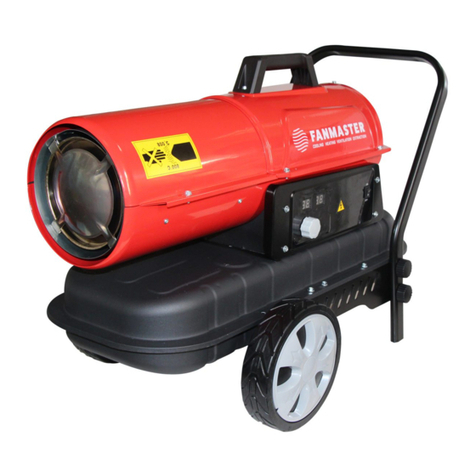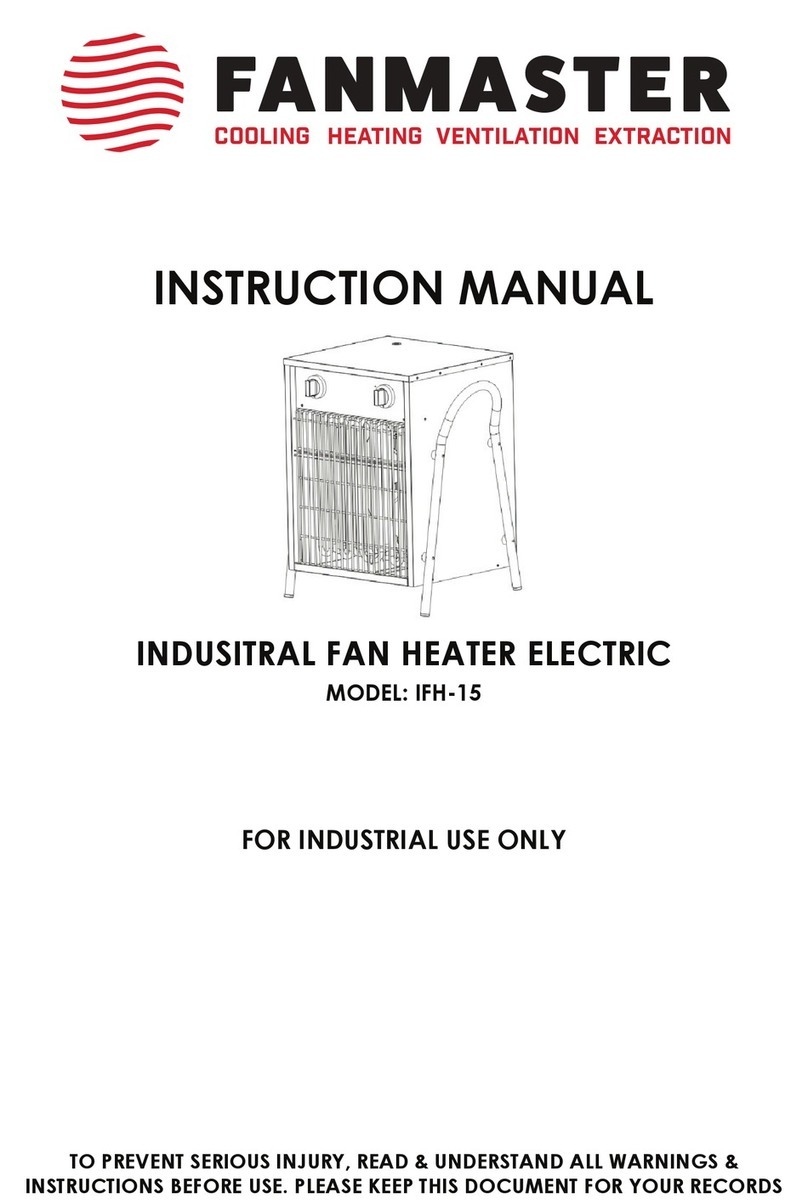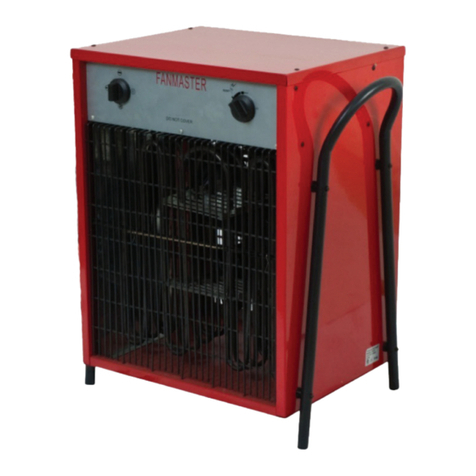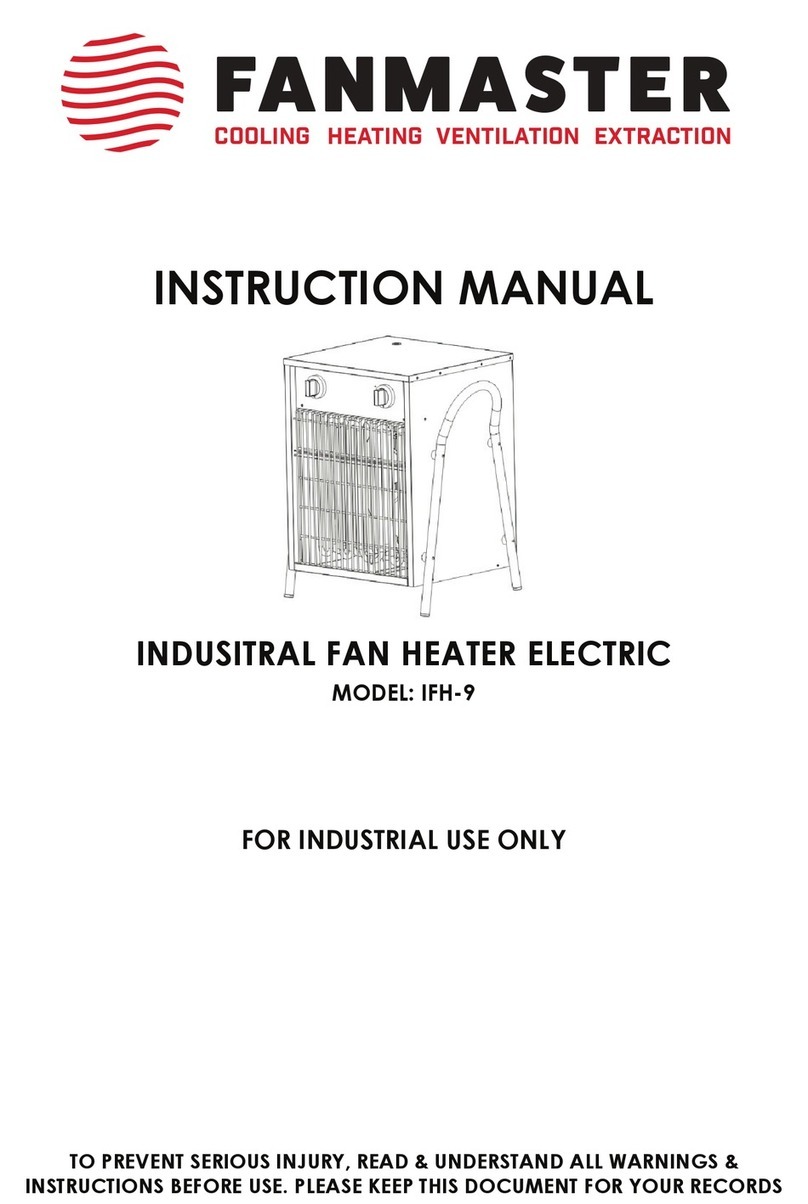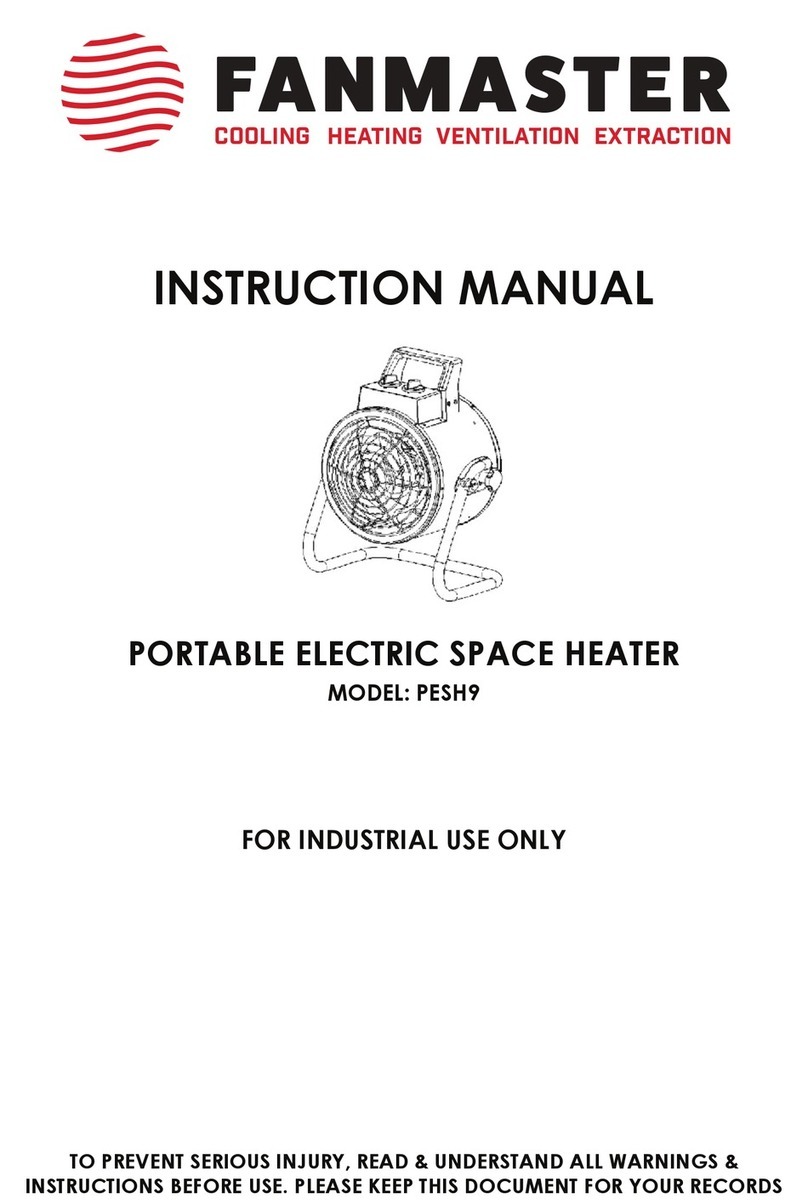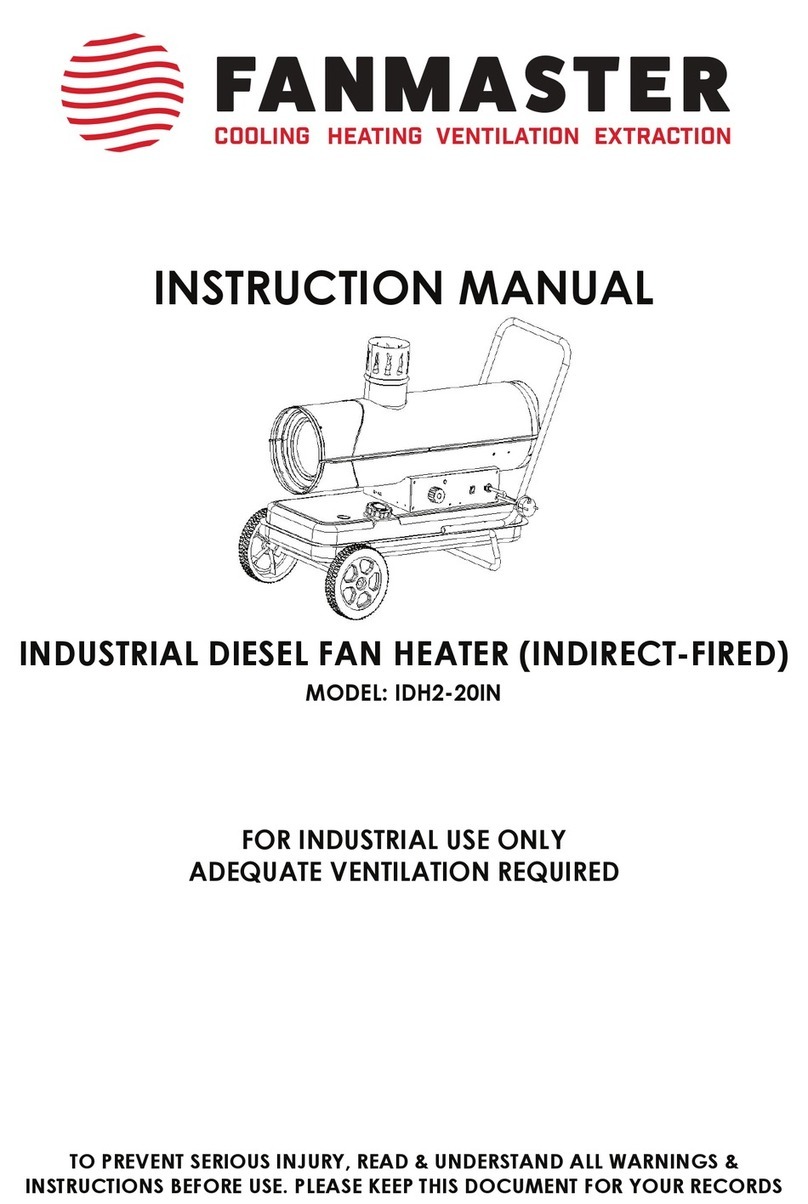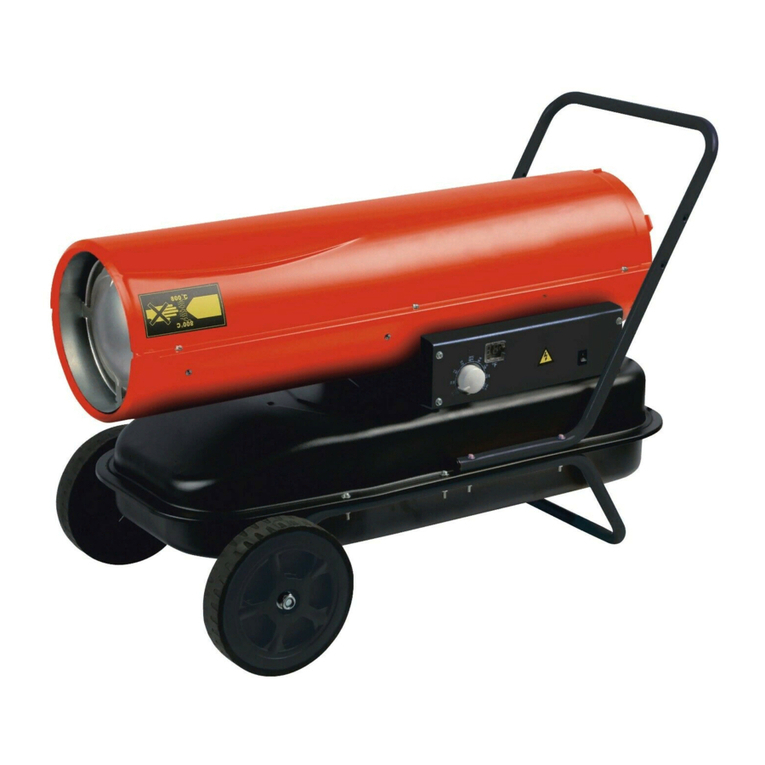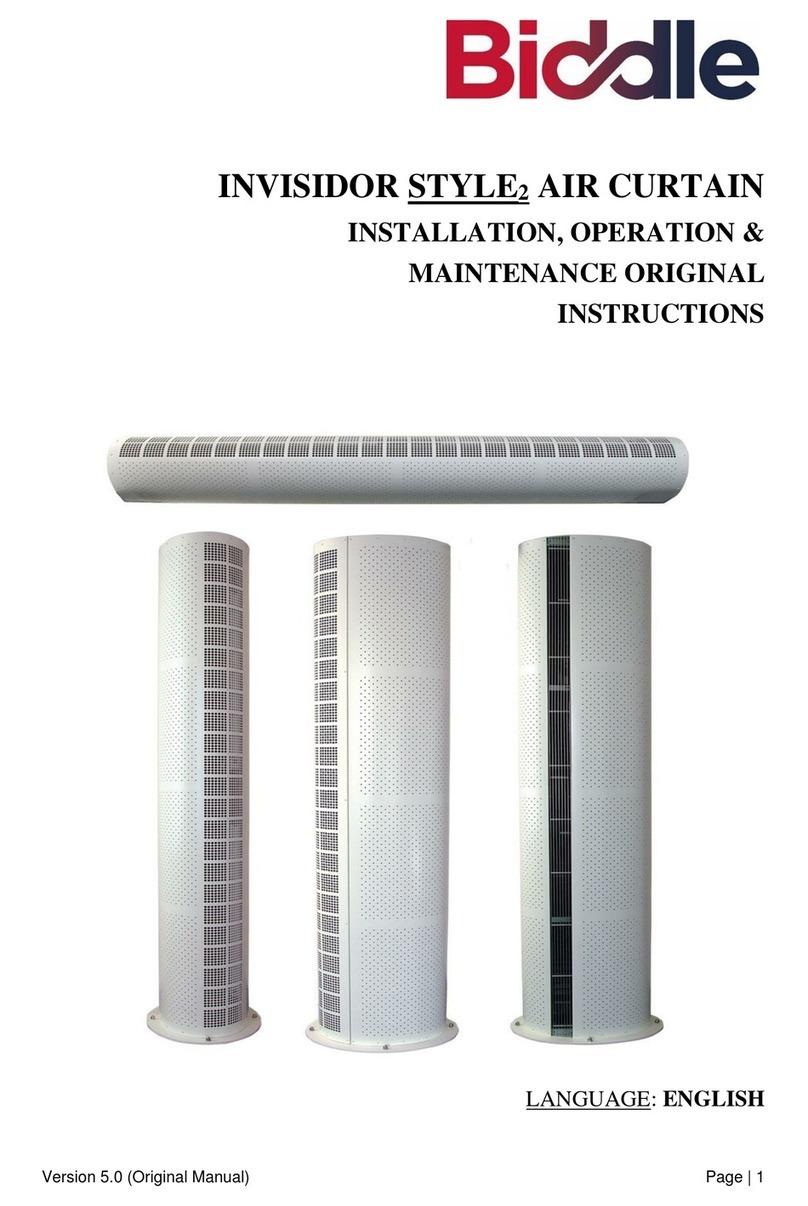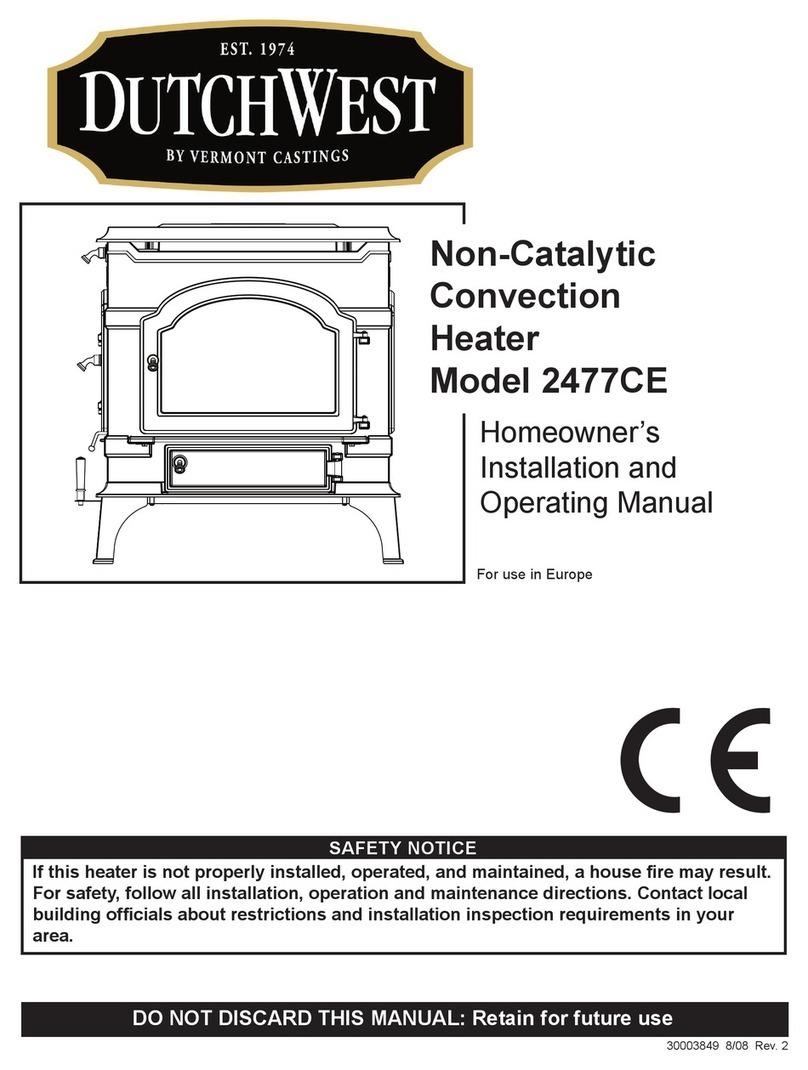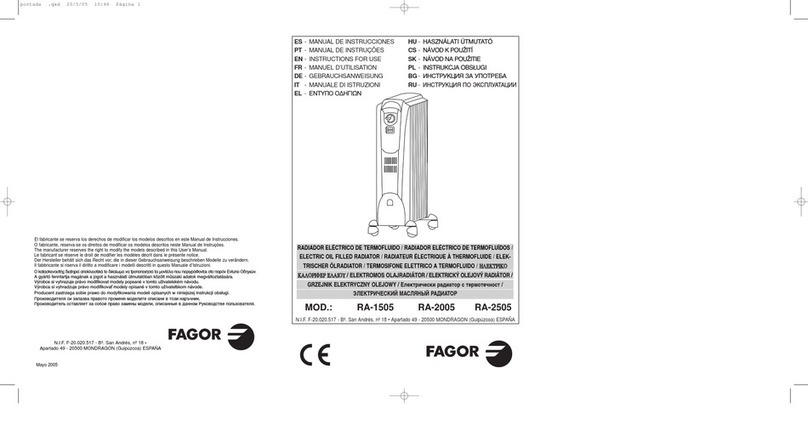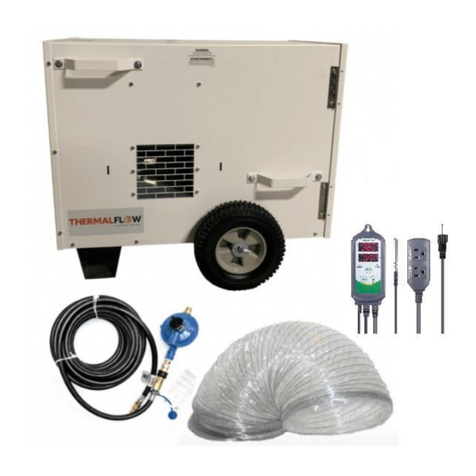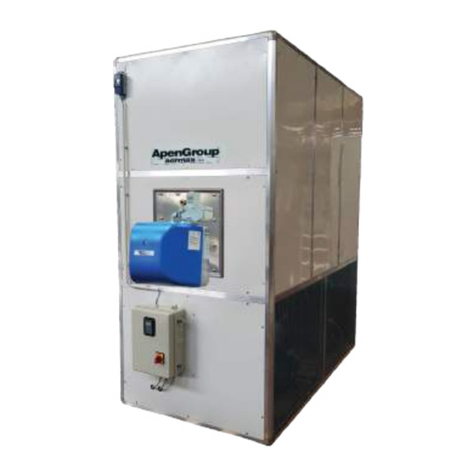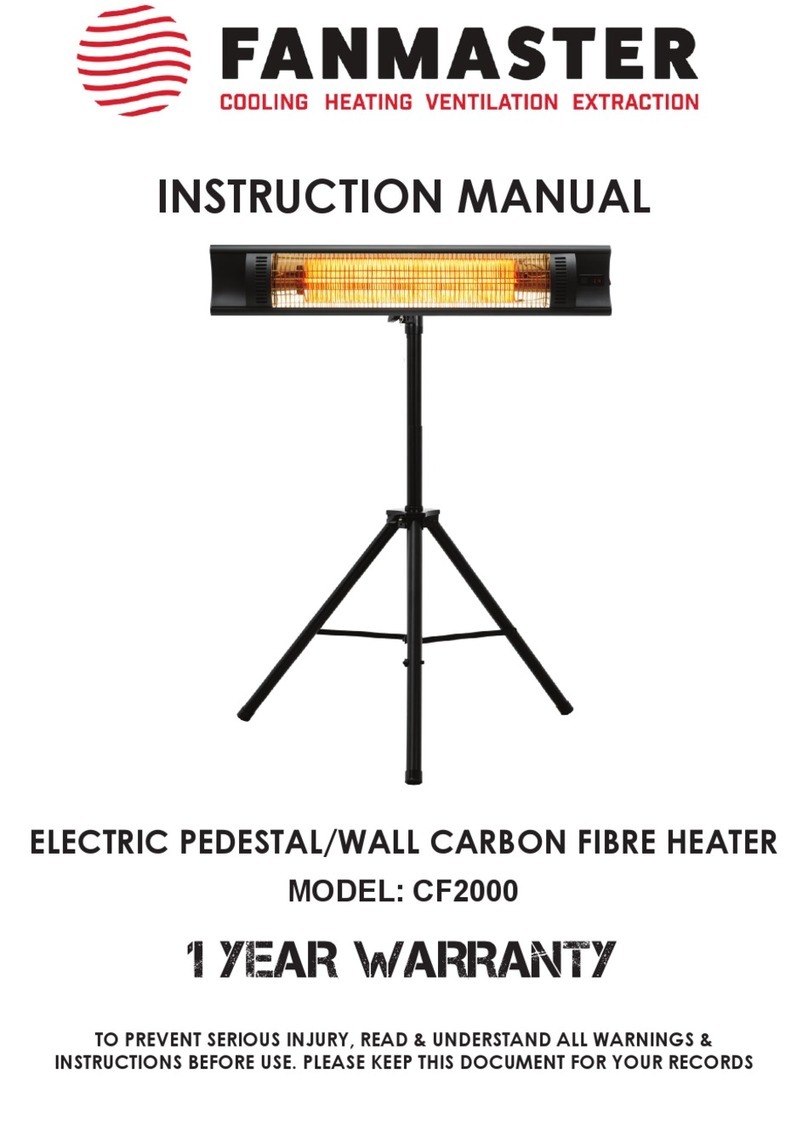
1. GENERAL SAFETY RULES & WARNINGS1. GENERAL SAFETY RULES & WARNINGS
• WARNING:
Failure to comply with the precautions and instructions provided with this heater, can result
in death, serious bodily injury and property loss or damage from hazards of re, explosion,
burn, asphyxiation, carbon monoxide poisoning, and/or electrical shock.
• Only persons who can understand and follow the instructions should use or service this
heater.
• If you need assistance or heater information such as instruction manual, labels etc, please
contact Fanmaster.
• Check the heater thoroughly for damage. DO NOT operate a damaged heater.
• DO NOT modify the heater or operate a heater which has been modied from its original
condition.
• Fire, burn, inhalation and explosion hazard. Keep solid combustibles, suchas building
materials, paper or cardboard a safe distance away from the heater. Never use the heater
in spaces which contain volatile or airborne combustibles or products such as gasoline,
solvents, paint thinner, dust particles or unknown chemicals.
• The gas heater must only be used on re resistant oors. Safety distance: 2m from walls
or other objects. The burner must be regularly cleaned if used in dusty environments. All
service operations must be carried out by a qualied and authorised person or agent.
• IMPORTANT:
Not for domestic use! For industrial use only. Use in open buldings, please abide by the
relevant national and local guidelines and regulations.
• For indoor use only. Not for use where exposed to weather.
• Use ONLY in well ventilated areas.
• CAUTION:
Due to the high surface and exhaust temperatures, adults and children must observe
clearances to avoid burns or clothing ignition. Do not touch. Keep children, clothing and
combustibles away.
• Never point the heater directly at persons nearby. Install the heater such that is not directly
exposed to water spray, rain and/or water.
• Never use in areas normally for habitation and/or where children may be present. Not for
domestic use.
• Operate only on a stable level surface.
• Do not use in a dusty atmosphere. Never restrict or duct inlet or outlet.
• Use only with electrical power supply as stated on the rating plate. The electrical
connection and earthing must comply with Australian standards.
• Use only a properly eather socket and/or extension cord.
• Do not move, handle, or service while the heater is hot or in use.
• Use only in accordance with national and loca regulations, directives and all other
relevant restrictions.
• Risk of electric shock. Do not open.
This heater is supplied with an Australian plug. The value of the fuse tted is marked on the
pin face of the plug. Should the fuse need replacing, ensure it is the correct rating.
This heater is not intended for use by persons (including children) with reduced physical,
sensory or mental capabilities or lack of experience and knowledge, unless they have been
given supervision or instruction concerning use of the heater by a person responsible for their
safety. If the supply cord is damaged, it must be replaced by Fanmaster, its service agent or
similarly a qualied persons in order to avoid a hazard.
